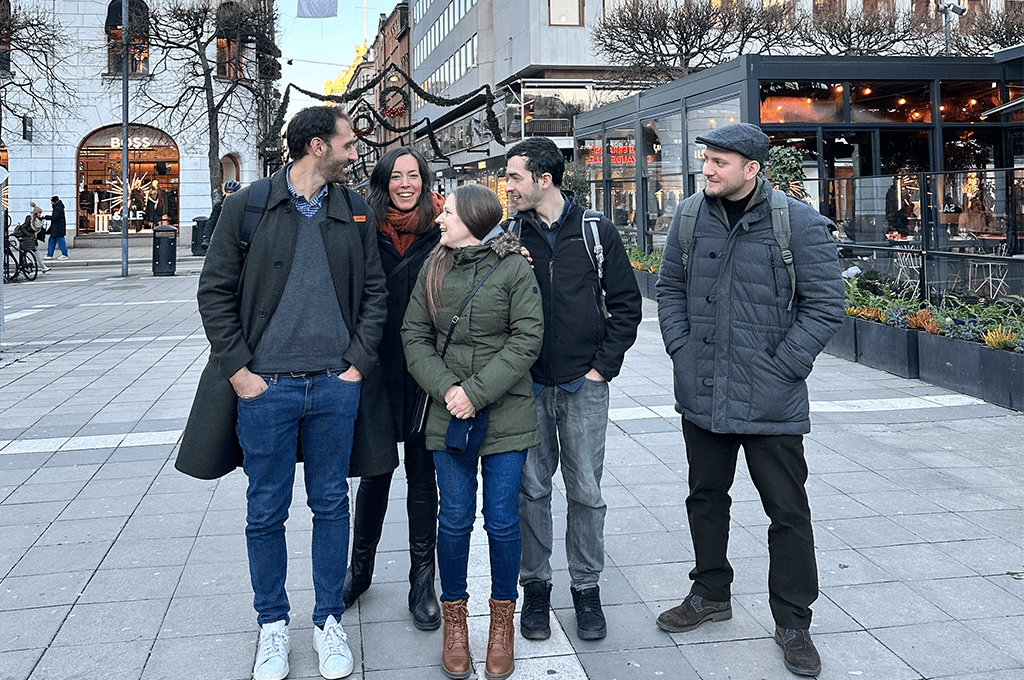Challenging established believes won Anete Romanauska the prize
To be a successful researcher, you have to find a way to juggle work and life outside the lab, something Anete Romanauska makes sure to prioritize. In her PhD research, which won her the Cell and Molecular Biology category of the Science & SciLifeLab Prize for Young Scientists, she discovered that the inner nuclear membrane is a metabolically active territory.
Few can say that their findings have launched a new field of research. Anete Romanauska, 2021 Science & SciLifeLab Prize for Young Scientists winner in the Cell and Molecular Biology category, now can. Her findings have put in motion a new field within nuclear biology.
In her PhD research, and essay “Storing fat inside the nucleus”, she challenged the established view of the inner nuclear membrane as spatially isolated and dependent on lipid supplies, and discovered that it is, in fact, a metabolically active territory with its own lipid functionality, allowing it to form nuclear lipid droplets for lipid storage.
Dancing herself sane
Early on in her research career, Anete Romanauska found it hard to deal with the disappointment of a promising scientific idea not holding up. With experience, that has simply become part of the job. She still struggles, however, as many researchers, with finding a balance between research and everything that is not. This is not easy, when you as Anete Romanauska “always try to do everything as good, as much and as fast” as she can.
It is really easy to get overwhelmed when doing research, therefore it is really important to find time for yourself and set it as a priority. I have set dancing as one of my priorities and find time with careful and smart planning
Anete Romanauska stresses that meeting with family and friends is important to gain some perspectives and renewed energy, but she also emphasizes physical activity as a tool for staying sane. For Anete Romanauska, that means dancing. In Latvia, where she grew up, stage folk dances – “dances that have been formalized into choreographed presentations based on traditional dance patterns” – was a big hobby. She performed these dances on stages at Christmas, Easter, events and festivals – the latter of which the Song and Dance Festival is the most important one. Looking this up on Youtube, as you do, it can best – or very subjectively – be described as a choreographed mass dance of hundreds of people creating intricate patterns when viewed from above – think opening ceremony of the Winter Olympics in South Korea. Up close, delicately moving dancers sway around in beautiful clothes – the latter which may draw your mind to a Harry Potter ball. Now, urban and jazz dance has been her priority since a few years back, which she makes sure to do two or three times a week.
“It is really easy to get overwhelmed when doing research, therefore it is really important to find time for yourself and set it as a priority. I have set dancing as one of my priorities and find time with careful and smart planning” says Anete Romanauska.
We have been really busy uncovering and understanding a new phenotype. Therefore, we have paused our research of the INM. But this is also the beauty of science – you never know what you will find and where your research will lead you” says Anete Romanauska.
An unexpected discovery
Anete Romanauska is now a postdoctoral researcher at the Max Perutz Labs in Vienna, and has lots of ideas on where to take the inner nuclear membrane research. She would for example like to study whether the properties of the inner nuclear membrane she found in yeast cells also are present in human cells. She would like to dive deeper into the lipid metabolism of the inner nuclear membrane, and see if it contributes to human diseases.
These issues will have to wait, however. Anete Romanauska has, for now, abandoned the inner nuclear membrane research in favor of a new project that excites her. While working on her latest publication, she made an unexpected observation.
“We have been really busy uncovering and understanding a new phenotype. Therefore, we have paused our research of the INM. But this is also the beauty of science – you never know what you will find and where your research will lead you” says Anete Romanauska.
Learn more about Anete Romanauska and read her award winning essay.





